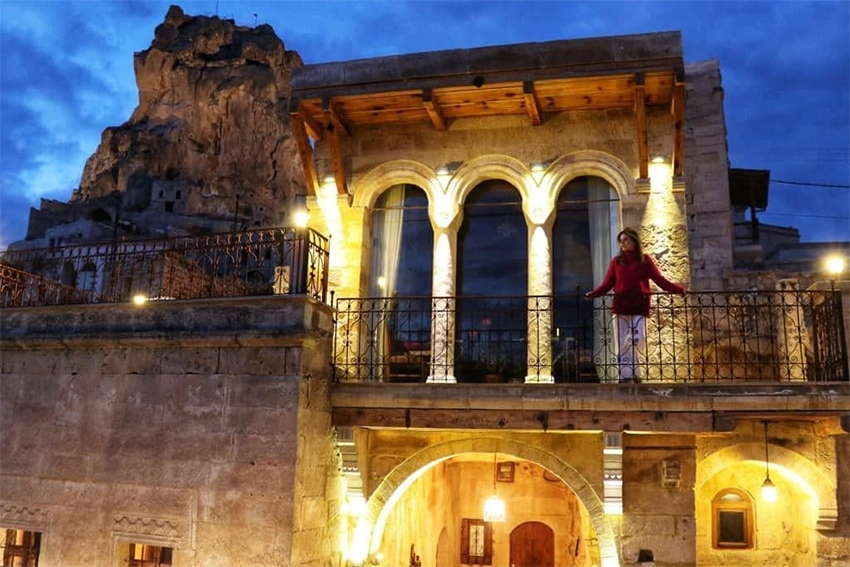Mustafapasa (Sinasos)
Mustafapaşa (Sinasos): A Cultural Memory Carved in Stone
History and Cultural Heritage
Located just 6 km south of Ürgüp, Mustafapaşa—formerly known as Sinasos—was once a wealthy Greek Orthodox settlement of Cappadocia during the Ottoman era. Until the population exchange of 1924, the majority of its inhabitants were Greek. Before this turning point, the town flourished with churches built through donations, elegant stone mansions, and a cosmopolitan life where multiple languages were spoken.
Today, Mustafapaşa preserves this legacy with 93 registered historic houses and around 30 churches and chapels. Strolling through its cobbled streets, visitors encounter richly decorated stone façades and monumental 19th-century buildings, many of which now serve as boutique hotels or restaurants.

Religious Heritage and Architectural Highlights
Constantine and Helena Church
Standing at the town’s center, the Church of Constantine and Helena is one of Mustafapaşa’s most remarkable landmarks. Originally built in 1729 and restored in 1850, it features a basilica plan carved from local stone. The entrance arch is decorated with unusual motifs: two dragons, a seraph, and an eagle, blending Christian iconography with Ottoman stone-carving traditions.
Although most of the frescoes have been lost, traces on the walls reveal that the interior was once richly adorned. Today, the church occasionally hosts cultural events and remains open to visitors. It is located right next to the town hall.

Saint Basil’s Church and Monastery Remains
Overlooking Bey Dere Valley to the north, the 19th-century Church of Saint Basil features fresco fragments including a Deesis (Christ flanked by Mary and John the Baptist) and apostles. Nearby, the rock-cut Monastery of Saint Nicholas, once revered by both Christians and Muslims, offers a labyrinth of interconnected chambers reflecting early Cappadocian monastic life.
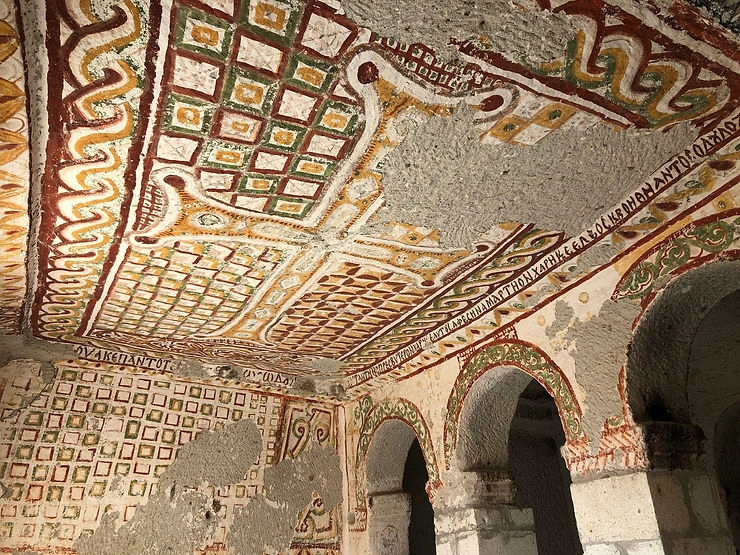
Saint Basil Chapel
About 2 km west of the town lies a small two-aisled chapel dating back to the Iconoclastic period (8th–9th centuries). Red ochre columns, geometric and floral motifs decorate its walls, and a burial niche inside is thought to belong to its founder.
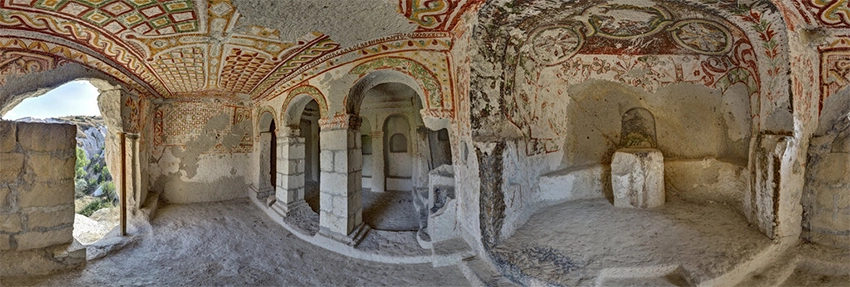
Ottoman-Turkish Heritage and Civil Architecture
Mustafapaşa is not only shaped by Greek Orthodox traditions but also by Ottoman-Turkish heritage. The Mehmet Şakirpaşa Madrasa, built around 1895–1900, displays an impressive U-shaped layout and monumental entrance crowned with an Ottoman tughra. Today, it houses part of Cappadocia University.
Directly opposite stands the Büyük Cami (Great Mosque), dating back to 1601, showcasing the region’s Islamic architectural presence. Together, these buildings reflect a history of coexistence and shared cultural identity.

Natural Routes and Photography Spots
Hidden Valley (Baltanın Yeri)
A short walk from the main square leads to Hidden Valley, an ideal trail for nature walks and photography. Along the route, visitors encounter the ruins of Saint Gregory’s Church, dovecotes carved into the cliffs, and mysterious rock tunnels.
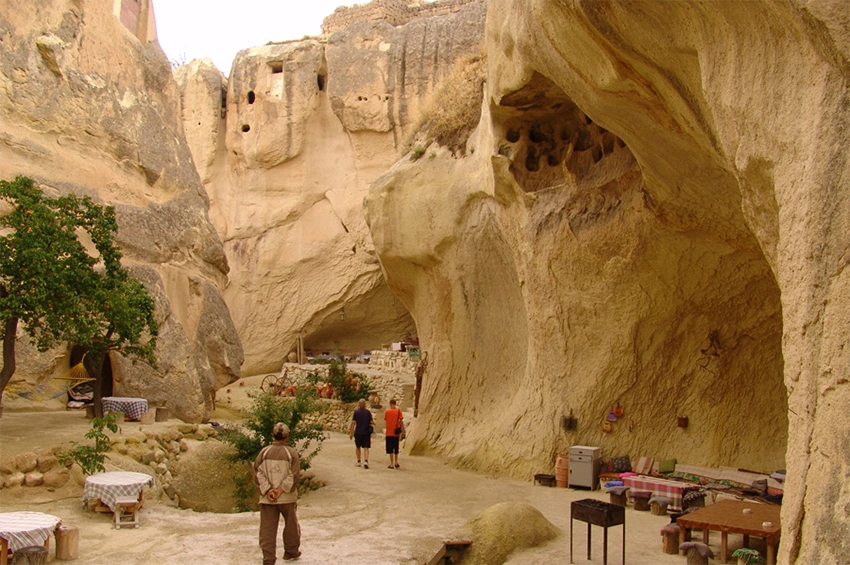
Gomeda Valley (Little Ihlara)
Stretching from Mustafapaşa to Üzengi Valley, Gomeda offers a more secluded alternative to Ihlara. Rock-cut cells, ancient churches, and the ruins of Gomeda create an atmosphere of discovery. At its entrance, Alakara Church preserves faint angel and saint frescoes. The play of light across the valley throughout the day makes it especially appealing for photographers.
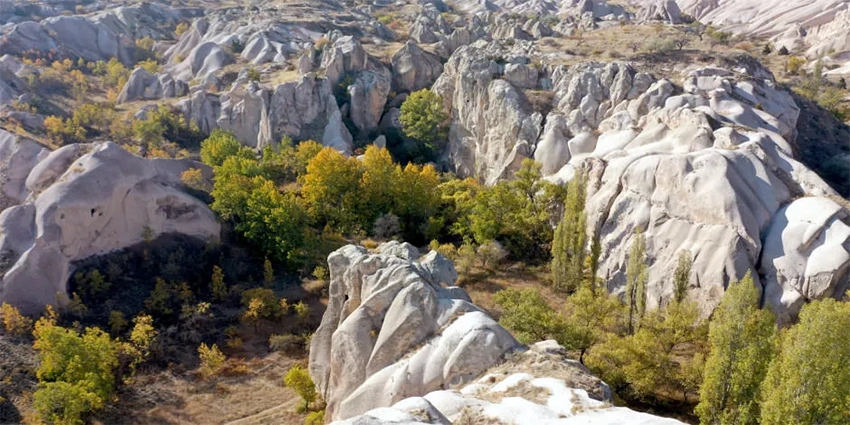
Historic Mansions and Landmarks
One of the town’s most picturesque sights is the Maraşoğlu Bridge, built in 1865. Its stone arch framed by surrounding mansions creates a striking photo opportunity.
Perhaps the most famous landmark is the Asmalı Konak, built in 1887. It gained nationwide recognition in 2002 as the set of a popular TV series. Today, it operates as the “Old Greek House,” serving both as a boutique hotel and a restaurant.
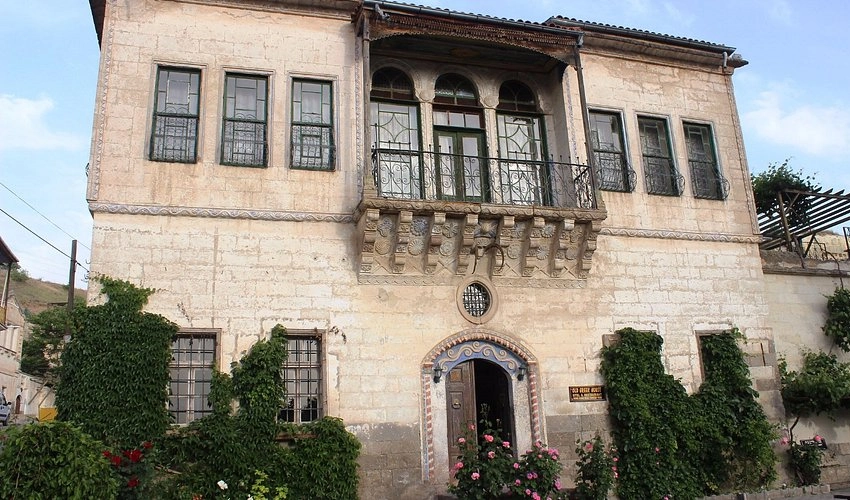
Practical Information
- Getting There: Mustafapaşa is 30 km from Nevşehir and 6 km from Ürgüp. It can be reached by private car or by minibus from Ürgüp.
- Visiting Hours: The Constantine and Helena Church is generally open between 08:00–17:00 with a small entrance fee.
- Accommodation: Many restored stone mansions have been converted into boutique hotels.
- Photography Tips: Early morning and late afternoon light highlight the stone façades beautifully.
- Museum Suggestion: The Cappadocia Art and History Museum presents the region’s cultural story through a unique collection of handmade dolls.
